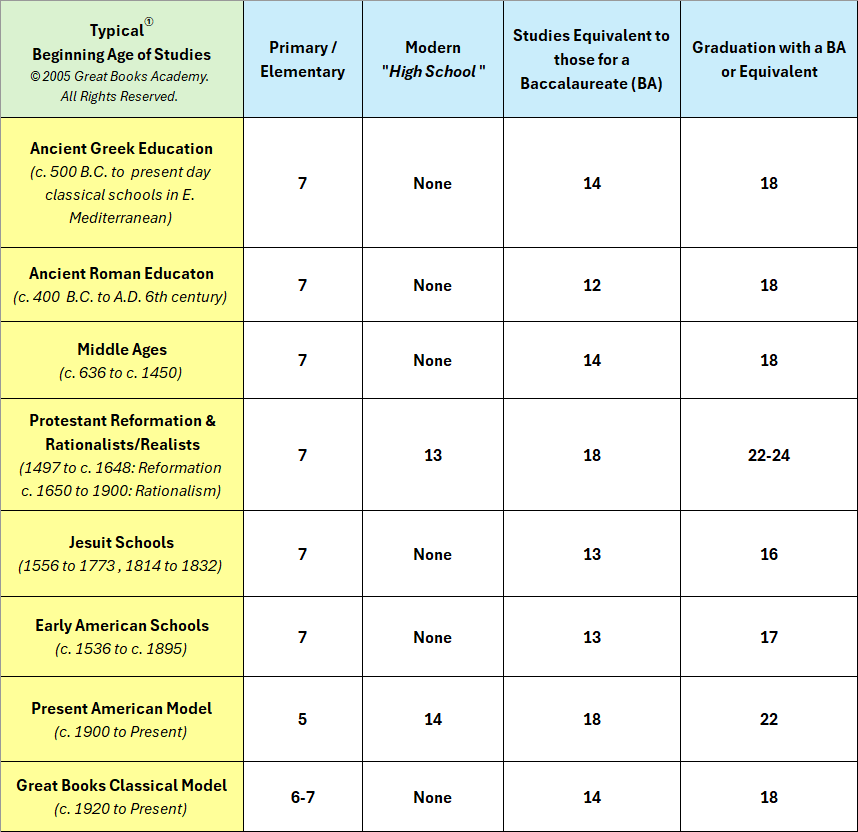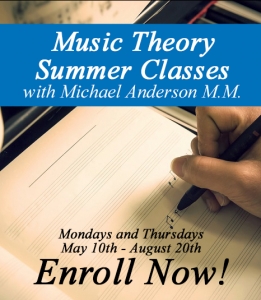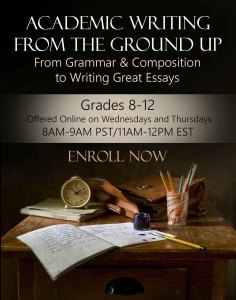What is the Best Age to Study the Great Books?
© 2000 Great Books Academy – All Rights Reserved
Drawing from history, educational philosophy, and modern experiences, there is abundant evidence that age 14 is the ideal time for students to begin to engage with the foundational texts of Western civilization. This article explores the historical precedents, educational philosophies, and responses from the Church and modern educators that support this conclusion.
What Does the History of Education Tell Us?
The history of education in the West, spanning over 2,300 years, offers valuable insights into the best age for studying the Great Books. From ancient Greece to early American education, students traditionally began their baccalaureate studies (or the ancient equivalent), including serious study of the great classics of literature, at age 14, typically continuing them to age 18. History reveals that this age period marks a significant time when students are intellectually mature enough to grasp the ideas presented in these works and still open-minded and eager to learn. This age pattern has persisted across centuries and cultures.

The ancient Greek model of education, particularly the teachings of Isocrates and Plato, established a foundation that largely determined educational systems in the West for millennia. Students in ancient Greece, typically between the ages of 14 and 18, engaged deeply with the great literature of their culture, beginning with the works of Homer. This age range was seen as optimal for developing the moral and intellectual capacities required to understand, appreciate and incorporate the lessons and ideals of these works into their lives. The influence of this classical Greek model continued through the ancient Roman period, the Middle Ages, and the first 250 years of education in America until around 1900.

The works of historians of education, such as Henri-Irénée Marrou and Hastings Rashdall, provide detailed accounts of how this age structure was maintained. For instance, Rashdall’s research highlights that students in medieval universities typically began their baccalaureate studies at about age 14 and completed them by 18, graduating with Bachelor of Arts degrees. Werner Jaeger emphasized the “direct line of continuity” from the Greek educational ideals to the Christian and medieval institutions and its lasting impact even to the present day.
This age of matriculation—beginning serious study equivalent to college studies— at 14, and completing such studies by 18—was not only a feature of ancient and medieval education but also influenced the structure of early American colleges until its influence began to decline about 1900.
Why Is Greek Education Important and Relevant Today?

Ancient Greek education laid the groundwork for Western education traditions, establishing a model that has been followed for millennia. The Greek approach to education was holistic, integrating the study of literature, grammar, dialectics, rhetoric, music, math and science into a unified curriculum aimed at cultivating well-rounded individuals.
The classical model of matriculation at age 14, was based on the belief and experience that this was the ideal age for students to begin engaging with complex ideas contained in the great classical texts. This approach recognized that students at this age are intellectually capable of grasping abstract concepts and that exposure to the Great Books during these formative years would shape their thinking and character in profound ways, before unwholesome influences did so.

The relevance of Greek education today lies in its emphasis on a well-rounded, liberal education that prepares students not just for a career but for life as thoughtful, informed citizens. In an age where education is increasingly specialized (the “barbarism of specialization” decried by Ortega y Gasset) and career-focused, the classical model serves as a reminder of the importance of a broad, generalist education that includes the interdisciplinary study of the humanities integrated in the great classics of the past (referred to as the Great Books now, in order to note the inclusion of later great works not written in ancient times).
Was Greek and Roman Intermediate Education the Same as American Secondary Education?
 Although Greek and Roman students, like American high school students, were in school between ages 14 and 18, what they studied was vastly different. Ancient Greek and Roman education was rigorous and focused on studying the foundational texts of their culture. In contrast, American high school education, particularly after the implementation of changes recommended by the Committee of Ten in 1894, became fragmented and dis-integrated, moving away from the comprehensive, integrated study of the Great Books.
Although Greek and Roman students, like American high school students, were in school between ages 14 and 18, what they studied was vastly different. Ancient Greek and Roman education was rigorous and focused on studying the foundational texts of their culture. In contrast, American high school education, particularly after the implementation of changes recommended by the Committee of Ten in 1894, became fragmented and dis-integrated, moving away from the comprehensive, integrated study of the Great Books.
In Greek and Roman education, students were immersed in the works of Homer, Plato, Aristotle, and other great thinkers, developing skills in rhetoric, philosophy, and critical thinking. This education was seen as essential for preparing young men for leadership roles in society. By age 18 these students were equal to or often more intellectually advanced than today’s college graduates.
In contrast, American education, particularly after the changes originating from the Committee of Ten report of 1894, shifted away from the classical model. The introduction of the new intermediate, 4-year high school system, with its segmented, dis-integrated curriculum and emphasis on textbooks rather than primary texts, marked a significant departure from the classical approach. This change has had lasting effects on the depth and breadth of education that American students receive during the intellectually formative years of 14-18.
What Had Been the Age of Matriculation in Early American Education?
 In early American education, the age of matriculation into college closely mirrored the practices of the medieval universities and later Jesuit colleges. Students typically began their college education between the ages of 12 and 14 and completed their studies by age 18. This was true for institutions like Harvard, Yale, Princeton, Rutgers, Columbia, Brown, Dartmouth, and the University of Pennsylvania.
In early American education, the age of matriculation into college closely mirrored the practices of the medieval universities and later Jesuit colleges. Students typically began their college education between the ages of 12 and 14 and completed their studies by age 18. This was true for institutions like Harvard, Yale, Princeton, Rutgers, Columbia, Brown, Dartmouth, and the University of Pennsylvania.
 For example, at Georgetown, America’s first Catholic college, students were admitted as young as 12 in the early 19th century. By 1870, the age of admission was raised to 13, but the expectation remained that students would complete their Bachelor of Arts degree by age 18. This structure reflected the influence of classical educational traditions, in which students in their teens were expected to engage with challenging material and great ideas for a broad, liberal education.
For example, at Georgetown, America’s first Catholic college, students were admitted as young as 12 in the early 19th century. By 1870, the age of admission was raised to 13, but the expectation remained that students would complete their Bachelor of Arts degree by age 18. This structure reflected the influence of classical educational traditions, in which students in their teens were expected to engage with challenging material and great ideas for a broad, liberal education.
What Are the Differences Between Ancient Greek and Roman Higher Education and College Education Today?
Greek and Roman advanced education differed significantly from modern college education in several key ways. First, students in ancient Greece and Rome who pursued more advanced studies equivalent to modern graduate studies, typically did so after completing their general, liberal education by age 18. The advanced studies were not the equivalent of modern undergraduate education but were more akin to graduate-level work in rhetoric, philosophy, law, or later, medicine. Second, students in Greek and Roman higher education were already well-versed in the foundational texts and ideas of their culture by the time they began these more advanced studies.
Finally, the purpose of higher education in ancient Greece and Rome focused on developing well-rounded individuals, familiar with profound ideas and capable of critical thought in all areas, and of assuming leadership positions in society. This is in stark contrast to the increasingly career-focused nature of modern education, where specialization and a focus on job-training often take precedence over a broad, liberal education.
Why and When Did the Age of Matriculation Change in American Secondary Education?
 The shift in the age of matriculation in American secondary education began in the late 19th century, largely due to the influence of the then-admired Prussian militarized-education system and the recommendations of the Committee of Ten. That Committee, established in 1892 by the National Education Association and chaired by Harvard President Charles Eliot, recommended in its 1894 report that American students spend 12 years in primary education, rather than the-then existing 8-10 years, delaying college matriculation to age 18. This added up to four years to the classical model.
The shift in the age of matriculation in American secondary education began in the late 19th century, largely due to the influence of the then-admired Prussian militarized-education system and the recommendations of the Committee of Ten. That Committee, established in 1892 by the National Education Association and chaired by Harvard President Charles Eliot, recommended in its 1894 report that American students spend 12 years in primary education, rather than the-then existing 8-10 years, delaying college matriculation to age 18. This added up to four years to the classical model.
 This change was influenced by the educational philosophies of figures like John Amos Comenius, often referred to as the “Father of Modern Education.” Comenius, writing in the 17th century, proposed delaying a bachelor’s degree six years from 18 to age 24, based on his notion that it should correspond to when a man was fully grown in his “natural body” which, based on his rationalist and “scientific” views, he concluded was age 25. Comenius’s ideas emphasized the extension of education and the postponement of adulthood, resulting in a “protracted adolescence.”
This change was influenced by the educational philosophies of figures like John Amos Comenius, often referred to as the “Father of Modern Education.” Comenius, writing in the 17th century, proposed delaying a bachelor’s degree six years from 18 to age 24, based on his notion that it should correspond to when a man was fully grown in his “natural body” which, based on his rationalist and “scientific” views, he concluded was age 25. Comenius’s ideas emphasized the extension of education and the postponement of adulthood, resulting in a “protracted adolescence.”
 Comenius’ views influenced the Prussian militaristic educational system developed by Johann Gottlieb Fichte that was gradually adopted throughout the United States during the mid-to late 19th century which incorporated the experiments of Johannes Sturm who developed the first “grade” (from Latin gradus – step) or “ladder” system of education in history in which students progressed together each year through grade levels, rather than based on individual mastery of the subject matter. The culmination of these and other experimental ideas on education accompanied the gradual implementation of the Committee of Ten’s recommendations by the states throughout the entire U.S from 1894 to c. 1940.
Comenius’ views influenced the Prussian militaristic educational system developed by Johann Gottlieb Fichte that was gradually adopted throughout the United States during the mid-to late 19th century which incorporated the experiments of Johannes Sturm who developed the first “grade” (from Latin gradus – step) or “ladder” system of education in history in which students progressed together each year through grade levels, rather than based on individual mastery of the subject matter. The culmination of these and other experimental ideas on education accompanied the gradual implementation of the Committee of Ten’s recommendations by the states throughout the entire U.S from 1894 to c. 1940.

By 1940 the system throughout the U.S. kept students in a graded-annual-step program of pre-collegiate education until age 18, delaying their matriculation into baccalaureate studies and later into responsible roles in society by four years.

This new intermediate level between primary public education and college-level public education is what we know today as the modern American public high school—a new form and period of “secondary” education without any historical precedent in classical education. American Catholic educators largely adopted this new model.
What Was the Response of Many Educators to These Changes?
The departures from classical education in the late 19th and early 20th centuries did not go unnoticed or unchallenged. Educators like Robert Hutchins and Mortimer Adler also responded to these changes by advocating for a return to a classical education model. Hutchins argued that “the road to education lies through great books” and that students should be exposed to these texts at an early age, beginning at 14.

Can All 14-Year-Olds Profit from Studying the Great Books?
The question of whether all 14-year-olds can profit from studying the Great Books is central to the debate over when students should begin their engagement with these texts. Robert Hutchins addressed this question directly, arguing that “the Great Books are great teachers; they are showing us every day what ordinary people are capable of.” He believed that these texts were not only accessible to young students but also essential for their intellectual formation and sound moral development. He explained that familiarizing students to the Great Books at an early age helped to develop their critical thinking skills and their ability to engage with complex ideas, and would provide good moral examples and principles.

Adler’s experience with high school students in Great Books seminars supported Hutchin’s view. Adler noted that these great texts teach students how to think critically, reason logically, and engage in meaningful discussions—skills that are essential for any educated person. He explained that “high school students have proved every bit as able to profit from [Great Books] seminars that I have conducted as have their college counterparts—have shown themselves even better participants in some ways.”
 Stringfellow Barr, co-founder of the Great Books program at St. John’s College, Annapolis, used the metaphor of a puppy chewing on a large bone to describe the experience of young students engaging with these texts. He said, “The great books serve the purpose of a very large bone thrown to a young puppy. The puppy will wrestle with it, will probably not get much meat off it while agitating it, but will certainly sharpen its teeth in the process.” Jacques Maritain expanded on this metaphor, adding that “this large bone is a marrowbone, and that not only do the puppy’s teeth have to grow sharper, but his living substance also has to feed itself upon the valuable marrow.”
Stringfellow Barr, co-founder of the Great Books program at St. John’s College, Annapolis, used the metaphor of a puppy chewing on a large bone to describe the experience of young students engaging with these texts. He said, “The great books serve the purpose of a very large bone thrown to a young puppy. The puppy will wrestle with it, will probably not get much meat off it while agitating it, but will certainly sharpen its teeth in the process.” Jacques Maritain expanded on this metaphor, adding that “this large bone is a marrowbone, and that not only do the puppy’s teeth have to grow sharper, but his living substance also has to feed itself upon the valuable marrow.”
These experiences and insights suggest that the study of the Great Books is not only appropriate for 14-year-olds but is also crucial for their proper intellectual and moral development. The challenges posed by these texts help to sharpen young minds and prepare them for the complexities of adult life.
Conclusion
 The study of the great classics has been a foundational element of classical education for millennia, with students traditionally beginning their engagement with these texts at age 14, and earning their bachelor’s degree, or its ancient equivalent, by age 18. The shift away from the classical model in modern American education, driven by the influence of figures like John Comenius and the recommendations of the Committee of Ten, has resulted in a fragmented and dis-integrated education system that delays students’ intellectual, moral and psychological maturation.
The study of the great classics has been a foundational element of classical education for millennia, with students traditionally beginning their engagement with these texts at age 14, and earning their bachelor’s degree, or its ancient equivalent, by age 18. The shift away from the classical model in modern American education, driven by the influence of figures like John Comenius and the recommendations of the Committee of Ten, has resulted in a fragmented and dis-integrated education system that delays students’ intellectual, moral and psychological maturation.
However, the evidence from history, educational philosophy, and modern experiences suggests that the traditional, classical model of education, including beginning the study of the Great Books at age 14, is still the most effective approach. This model not only provides students with a broad, interdisciplinary education but also helps to develop critical thinking skills and moral character.
Educators like Robert Hutchins, Mortimer Adler, and Jacques Maritain long recognized the value of the classical approach and advocated for a return to the classical model. Their experiences with high school students in Great Books seminars, as ours at the Angelicum Academy over the last 25 years, have shown that young minds are not only capable of engaging with these texts but also benefit greatly from the ideas and intellectual challenges they present.
As we consider the future of education, it is worth reflecting on the lessons of the past and the enduring value of classical education, including the study of the Great Books. By beginning their study at age 14, we can help to insure that the next generation is well-prepared to meet the challenges of the modern world with greater wisdom, insight, and moral integrity.
© 2000 Great Books Academy – All Rights Reserved
From one of our first students … If it’s anybody’s fault that I’m doing this crazy PhD thing now, it’s you – Great Books opened the lid of my world and set me on fire. I’m forever grateful for the program and the education I received from it; it is one of the greatest gifts I have ever received, and one that continually bears fruit and enriches my life in new and beautiful ways. I can never repay you for believing that 15-year-olds are capable of reading as much as graduate students! In a way my serious relationship to the Western canon began 15 years ago, in your classroom. This led to my place now, as a sort of professional bookworm. My life as it stands is pretty great, and I owe a lot of where I am now to you. Thank you so much for teaching. Pax, Kelsey B.






